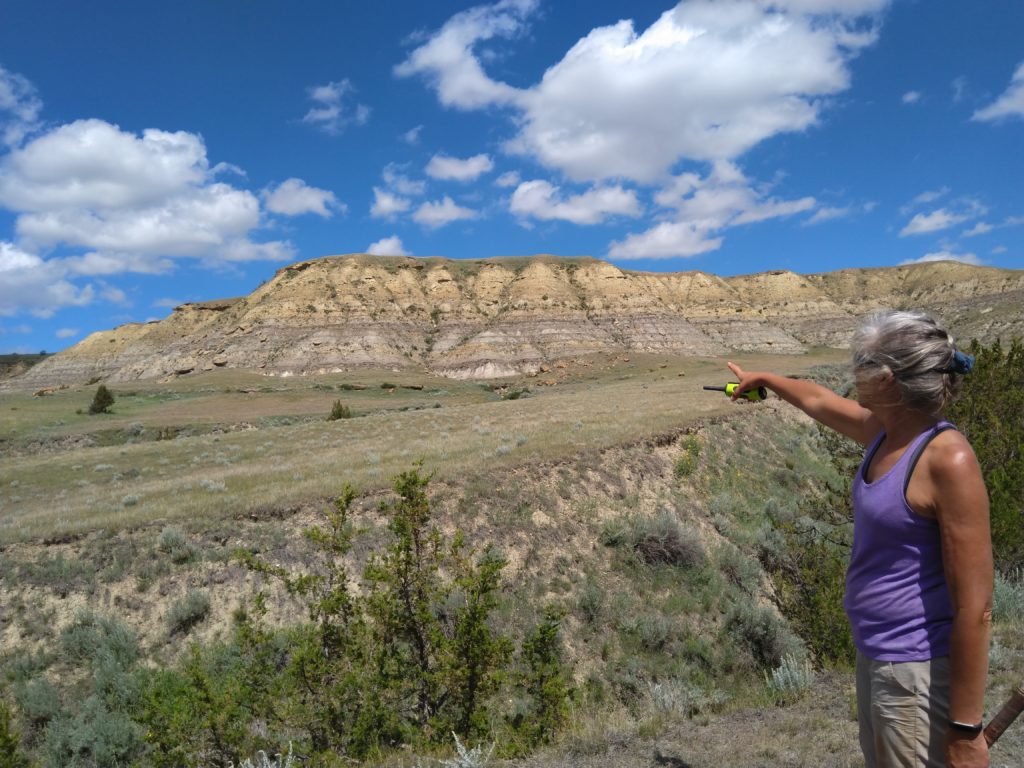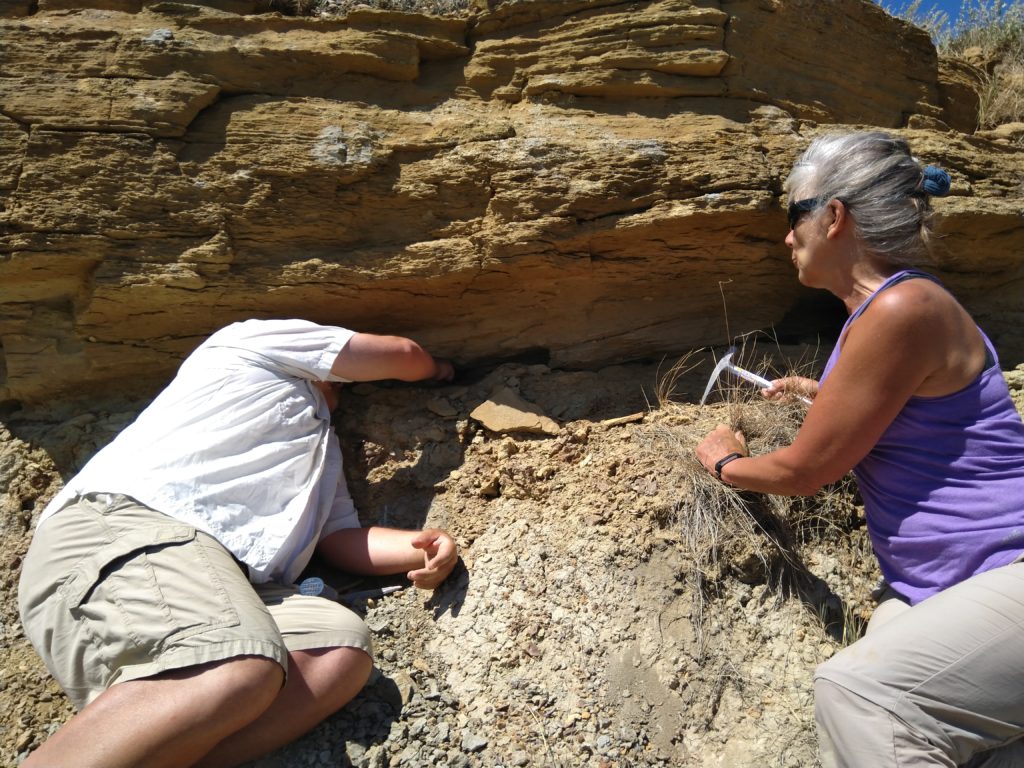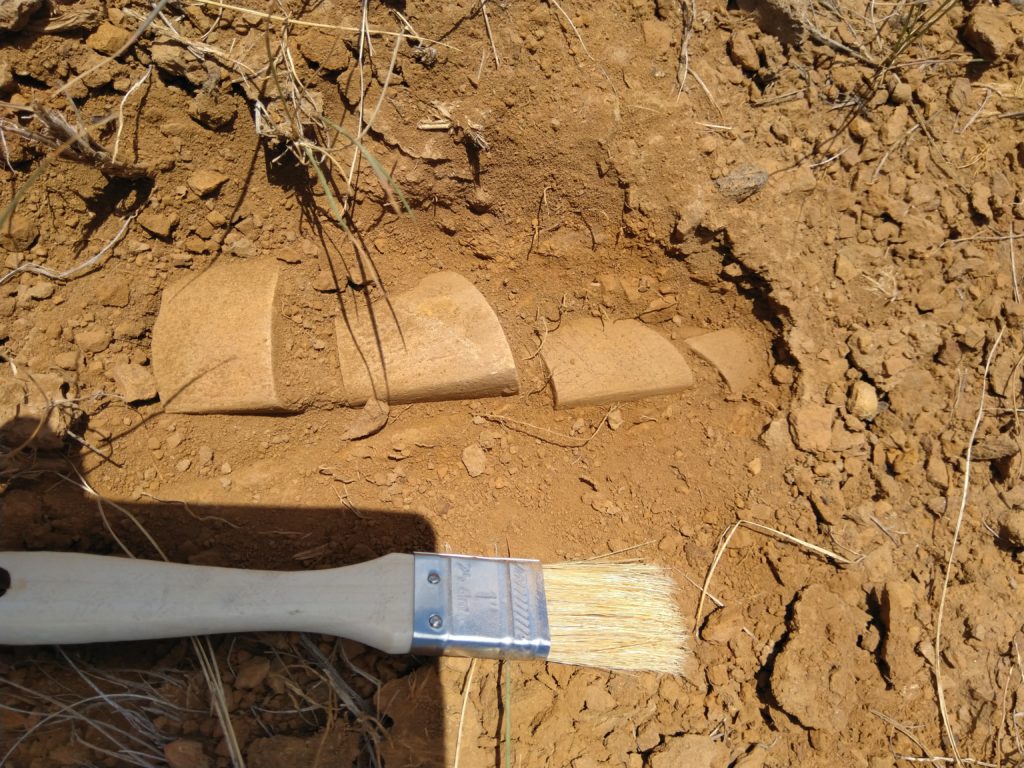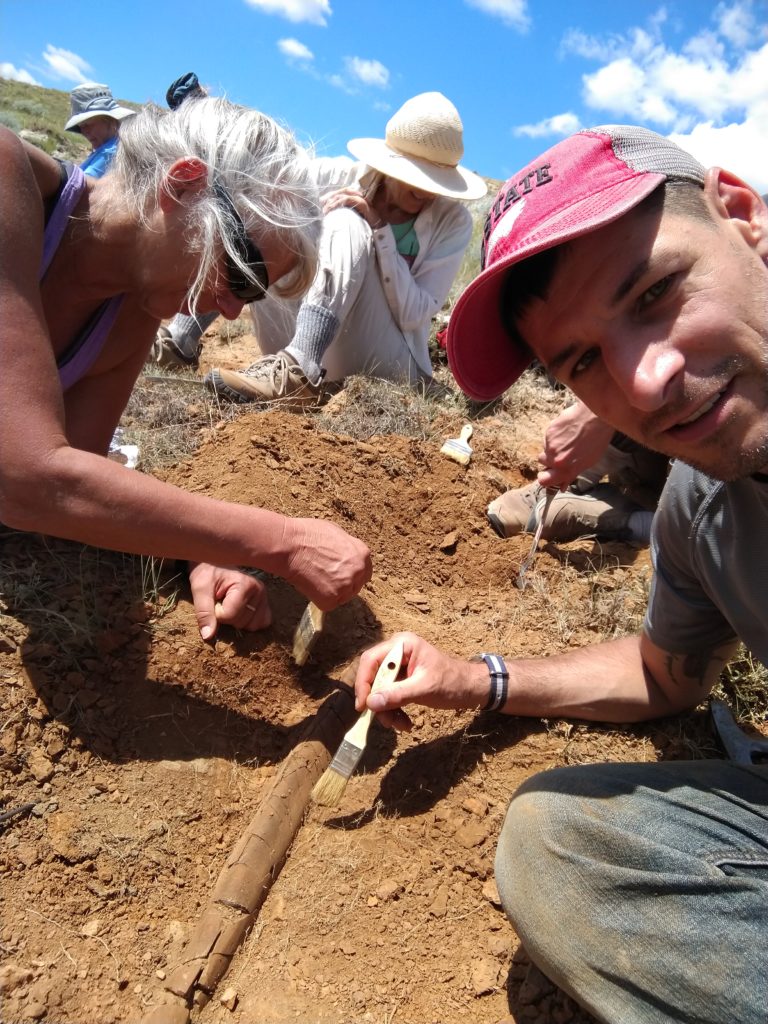Today was our first day of prospecting on private land we had permission to search for dinosaurs. The entire landscape in our field area lies within the Judith River Formation, a ~75 million year old Cretaceous unit consisting of interbedded coastal, fluvial, and floodplain deposits. During the Cretaceous, the interior US was covered by a shallow interior sea, and the deposits in the Judith River are nearshore or river environments that were flowing into the sea from the mountains to the west. Dead dinosaurs could be preserved by rapid burial in these river or floodplain environments, and that’s what we were here to find.
We split into group of three, and I started out the day with Mary and Johan. We head first to a site that they have visited previously, and Johan preceded to find a some bone fragments and a couple theropod teeth. I really needed to orient myself geologically and stratigraphically however, and split off from Mary and Johan to walk the section.
When I got back to Mary and Johan, Mary had found a lot of bone underneath a massive block of sandstone, including a tooth possibly still embedded in a jaw. While exciting, the overlying sandstone block made excavation of this bone highly unlikely.
After a short lunch, we decided to head walk toward another previously visited site. We headed down to retrieve our bags from where we had left them in the morning, near the site where Johan had found his teeth. As we were gearing up to hike towards the next spot, I spotted a piece of bone resting in the weathered sandstone. This spot had a lot bone fragments that had weathered out, so it was not unusual, but for some reason I decided to excavate into the weathered sandstone a bit.
As I continued to clear, we realized the bone was rather large and continued into the saprolite a ways. Mary, Scott and I continued to excavate and get the bone fully exposed. No one was quite sure what dinosaur it was from, or even what bone it was (possibly a pelvic bone).
I think the plan is to plaster it up so that it can be taken into the museum lab for further prep.
Once finished with my bone we walked to the previous site so we could plaster jacket and remove a large bone found last year that Mary and Elena are going to use for molecular research. Finished with that, we made the long walk back to the vehicles and left the field shortly after 6pm, exhausted from the tiring, but exciting first day out.








Leave a Reply
You must be logged in to post a comment.